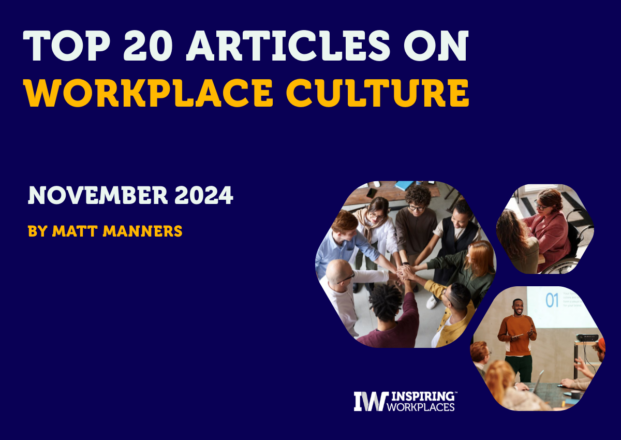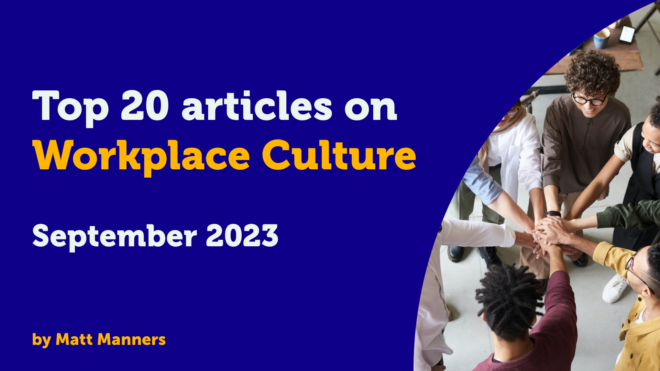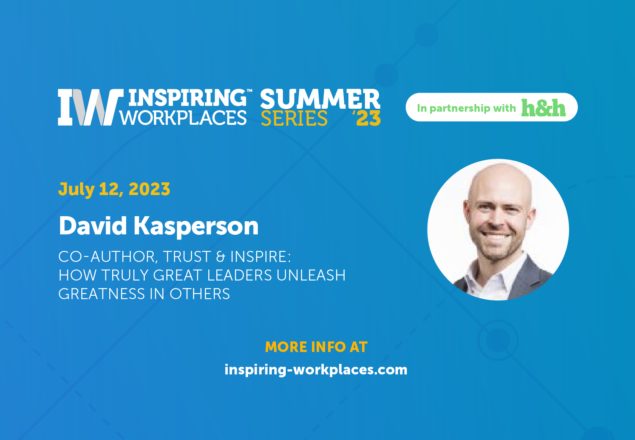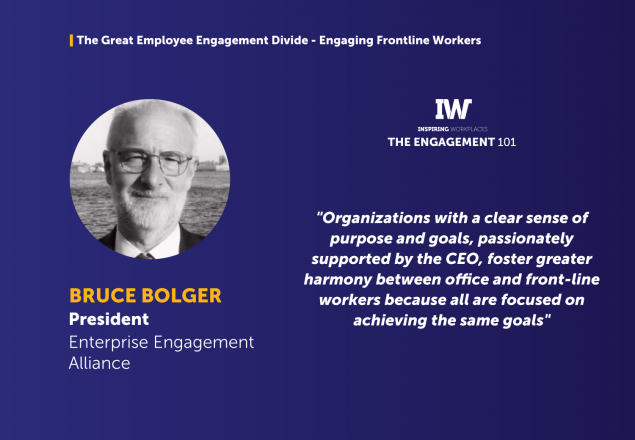
11th February 2025
Top 20 Articles on Workplace Culture: January 2025
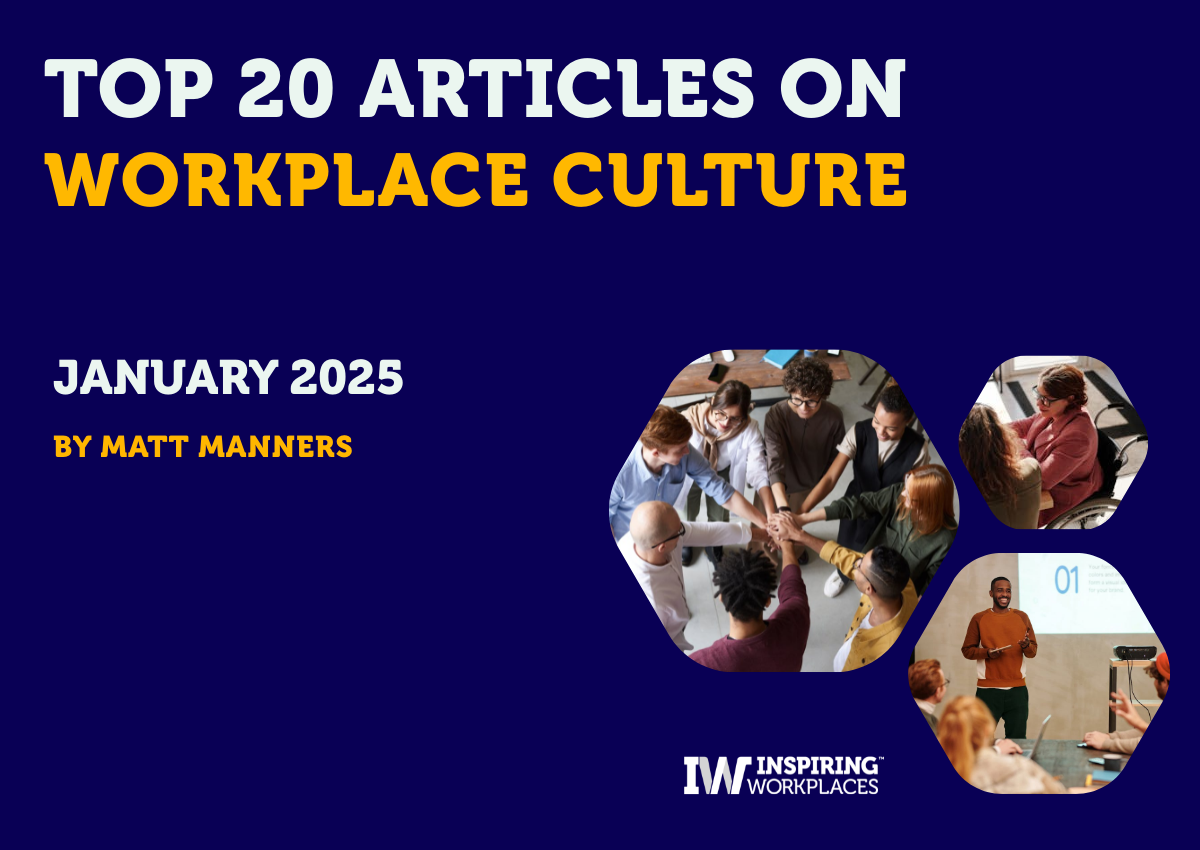
Welcome to the Inspiring Workplaces Top 20 Articles on Workplace Culture for January 2025.
We want to help inform and inspire you from some of the best content out there. Each month we will consolidate these articles for you to help give you a quick and easy snapshot. To help drive you and your organisations forward.
The articles will be underpinned by seven key elements that are reflected in our bespoke COMPASS methodology, that also underpin the Top Inspiring Workplaces worldwide. They are:
- Wellbeing
- Culture & Purpose
- Leadership
- Inclusion
- Employee Experience
- Communication & Voice
- Society & Sustainability
Key Workplace Culture Learnings from January:
- The Skills Gap is Growing: Rapid technological change is outpacing workforce development, creating a critical need for continuous learning and upskilling.
- HR’s Focus in 2025: Building connections, emotional intelligence, and self-leadership will be central to sustaining engagement and productivity.
- Meaningful Goal Setting Boosts Motivation: Goals that challenge individuals, encourage learning, and involve collaboration lead to long-term personal and professional growth.
- Skills-Based Hiring is the Future: Organisations must prioritise hiring based on skills rather than traditional qualifications to improve workforce adaptability.
- AI is Reshaping Workplace Culture: Employees are seeking purpose and belonging, and companies must balance AI-driven efficiency with meaningful human connection.
- Employees Demand Accountability from Leaders: Transparency, trust, and responsible leadership are essential to boosting engagement and fostering loyalty.
- AI Will Transform Job Skills by 2030: Leaders must drive AI adoption strategically, ensuring their workforce is prepared for the skills of the future.
- Remote Leadership Requires Intentionality: Success in remote settings depends on structured onboarding, visibility, and clear communication strategies.
- Leadership Burnout is Reaching Crisis Levels: 40% of leaders are considering leaving due to stress, making leadership development a top priority.
- The Green Ocean Strategy Redefines Growth: By integrating culture, sustainability, resilience, and AI, businesses can remain ethical, competitive, and future-ready.
- Company Culture is Key to Retention: Shared purpose, strong leadership, psychological safety, and learning opportunities foster engaged and loyal teams.
- Effective Communication Requires Thoughtfulness: Selecting the right communication tools and fostering human connections in virtual settings improves collaboration and trust.
- Managing Overwhelm Starts with Small Actions: Setting boundaries, prioritising tasks, and practicing self-compassion help reduce stress and improve focus.
- Collaboration Needs Balance: Over-collaboration can reduce efficiency; leaders must streamline meetings, encourage asynchronous work, and clarify roles.
- Gen Z is Redefining Work: They favour flexibility, autonomy, and entrepreneurship over rigid corporate structures, prompting businesses to evolve.
- Neurodiversity Requires Structural Inclusion: Simple changes like clear communication, inclusive social events, and adaptable workspaces create a more supportive environment.
- Diversity Initiatives Must Move Beyond Metrics: Genuine inclusion requires trust, psychological safety, and continuous organisational education—not just DEI policies.
- DE&I Strategies Drive Business Success: Inclusive workplace cultures, data-driven DE&I efforts, and leadership training enhance productivity and innovation.
- Workplace Mental Wellbeing is Crucial: Encouraging movement, connection, joy, and gratitude can transform workplace culture and boost resilience.
- Burnout and Disengagement Demand Change: Organisations must prioritise flexibility, recognition, and wellbeing to retain talent and build high-performing teams.
The articles are as follows…
A Culture Of Connection: Survey Shows Top HR Priorities For 2025
Source: Forbes
Author: Chris Westfall
IW COMPASS point: Culture & Purpose
Key Takeaways
- Connection is the foundation of workplace culture – Employees need more than just digital tools; they seek purpose, engagement, and human connection.
- Managers are overwhelmed – 75% of HR leaders report mid-level managers are struggling with expanding responsibilities, requiring more autonomy and leadership support.
- Gen Z is reshaping leadership – With 1 in 10 managers expected to be Gen Z by 2025, training must evolve to meet their expectations and skills.
- AI can accelerate but also isolate – While AI-driven automation improves workflows, it risks alienating employees and reducing workplace connection.
- Training is falling short – Despite increased investment in leadership development, many organizations are not seeing meaningful improvements in engagement.
- Coaching drives performance – Unlike traditional training, coaching fosters self-leadership, resilience, and emotional intelligence, crucial for effective workplace culture.
- Emotional intelligence is more valued than ever – HR leaders are prioritizing well-being, boundary-setting, and clarity to create better leaders across all generations.
- Self-leadership is critical – Employees need autonomy and adaptability to thrive in the evolving work environment.
- Technology isn’t the solution to culture – While AI aids productivity, true engagement comes from fostering meaningful human interactions.
- HR leaders must rethink engagement strategies – A people-first approach, focused on connection and coaching, is key to sustaining workplace culture in 2025.
Read the full article here
Potential Leadership Crisis Looms in 2025 as Burnout Increases
Source: HR Dive
Author: Carolyn Crist, featuring DDI’s Global Leadership Forecast 2025
IW COMPASS point: Wellbeing
Key Takeaways
- Leadership Burnout is Rising – 40% of stressed leaders are contemplating leaving their roles to improve their well-being, contributing to a leadership pipeline crisis.
- Trust in Management is Declining – Trust in immediate managers dropped from 46% in 2022 to 29% in 2024, with older employees expressing the least confidence.
- High-Potential Talent is Frustrated – Intent to leave among emerging leaders rose from 13% in 2020 to 21% in 2024, with lack of growth opportunities being a key driver.
- Leadership Skill Gaps are Widening – “Setting strategy” and “managing change” are identified as major weaknesses, but only 22% of HR teams prioritize these skills.
- HR Leaders Also at Risk of Exit – HR professionals are also considering leaving due to increasing pressures, emphasizing the need for leadership development initiatives.
- Workplace Conflict is Fueling Burnout – Emerging leaders struggle with managing conflict, leading to greater stress and disengagement among employees.
- Investment in Leadership Development is Critical – Organizations must prioritize emotional intelligence, conflict resolution, and leadership coaching to support managers and emerging leaders.
Read the full article here
Overcoming Overwhelm
Source: Quick Confidence: LinkedIn Newsletter
Author: Selena Rezvani
IW COMPASS point: Wellbeing
Key Takeaways
- Break Tasks into Small Steps: Instead of tackling everything at once, focus on tiny actions to reduce mental clutter and regain control.
- Practice Mindful Presence: Narrating your actions keeps you anchored in the present and prevents spiraling thoughts.
- Communicate Your Limits: Setting boundaries with colleagues and loved ones helps manage workload and protect mental space.
- Acknowledge Physical Stress: Overwhelm manifests in the body, so slow down, breathe deeply, and engage in small self-soothing actions.
- Reframe Overwhelm as Temporary: Remind yourself that stress doesn’t define you—it’s a moment, not a permanent state.
- Ask for Support: Others aren’t mind readers—express your needs and lean on those willing to help.
- Prioritize Self-Compassion: Treat yourself with kindness, physically and emotionally, to ease tension and restore balance.
- Simplify and Slow Down: Reduce stress by taking deliberate, intentional pauses rather than rushing through tasks.
- Identify Personal Triggers: Understanding what pushes you into overwhelm can help you proactively manage future stressors.
- Share and Learn from Others: Engaging in discussions about stress strategies fosters connection and offers fresh perspectives.
Read the full article here
3 Best Goals To Set For A Great Year And A Better You
Source: Forbes
Author: Dr. Tracy Brower
IW COMPASS point: Leadership
Key Takeaways
- Set Challenging Goals – Goals should push you beyond your comfort zone and require long-term effort, ensuring sustained motivation and growth.
- Expand Your Perspective – Learning new skills, meeting new people, or exposing yourself to diverse viewpoints can enhance creativity and fulfillment.
- Prioritize Habit Formation – Breaking goals into daily or weekly habits increases the likelihood of long-term success.
- Incorporate Social Impact – Goals that benefit others, such as volunteering or community engagement, can enhance personal happiness.
- Track Progress & Seek Feedback – Monitoring achievements and adjusting strategies ensures continuous motivation and improvement.
- Avoid Short-Term Gratification – Focus on long-term goals that contribute to future well-being rather than immediate pleasure.
- Engage in Collaborative Goals – Working with others on shared objectives can boost accountability and foster deeper relationships.
- Stay Committed to What Matters – Choose goals that align with your values and aspirations rather than societal trends.
- Balance Effort with Sustainability – Avoid setting too many goals at once; focus on a few meaningful ones to avoid burnout.
Read the full article here
7 Trends That Will Shape HR in 2025
Source: SHRM
Author: Kate Rockwood
IW COMPASS point: Employee Experience
Key Takeaways
- Skills-Based Hiring: Emphasizing employees’ capabilities over formal education to widen talent pools and address skill shortages.
- Continuous Upskilling: Regularly updating employee skills, especially in technology and AI, to maintain competitiveness.
- People Analytics: Utilizing data to predict workforce trends, improve retention, and identify development opportunities.
- Workplace Civility: Addressing rising incivility by fostering respectful and empathetic work environments.
- Financial Wellness Programs: Offering personalized financial benefits to support employees’ diverse needs and reduce stress.
- AI Integration: Implementing AI to enhance recruitment, training, and overall talent management processes.
- Regulatory Adaptation: Staying agile to comply with evolving labour laws and regulations post-election.
Read the full article here
What You’re Probably Getting Wrong About Workplace Communication
Source: Fast Company
Author: Stephanie Vozza
IW COMPASS point: Communication
Key Takeaways
- Choose the Right Communication Mode: Match the medium (email, video, instant messaging) to your goal—whether for efficiency, clarity, or relationship-building.
- Humanize Virtual Interactions: Small talk in emails or video calls helps build trust and reminds people they’re engaging with real humans.
- Use Synchronous Communication for Complex Topics: Video or phone calls allow for immediate feedback and avoid excessive email editing.
- Encourage Spontaneous Conversations: Quick, unplanned chats via video or instant messaging can replicate water cooler moments and improve team cohesion.
- Virtual Communication Can Strengthen Relationships: Regular digital interactions increase familiarity and trust, making remote work relationships as strong as in-person ones.
Read the full article here
Are You Being Exclusionary Without Realising It?
Source: People Management
Author: Rachel Morgan-Trimmer
IW COMPASS point:
Key Takeaways
- Fast-Paced Meetings Can Exclude Employees – Clear agendas, structured participation, and post-meeting follow-ups ensure all employees, including neurodivergent ones, have time to process information.
- Miscommunication Stems from Different Communication Styles – Neurodivergent employees may struggle with non-verbal cues, so fostering direct, compassionate, and open conversations reduces misunderstandings.
- Traditional Office Social Events Aren’t Inclusive – After-work drinks or loud, unstructured events can alienate employees. Offering diverse, structured, and alternative activities ensures broader participation.
- Office Design Impacts Inclusion – Harsh lighting, strong scents, and crowded spaces can be overwhelming. Providing flexibility, biophilic elements, and control over the environment enhances comfort.
- Inclusion Signals Psychological Safety – Taking active steps toward neurodiversity inclusion creates a culture where employees feel valued, leading to increased engagement and authenticity at work.
Read the full article here
6 Ways Leaders Can Manage The High Cost Of Workplace Collaboration Drag
Source: Forbes
Author: Dr. Cheryl Robinson
IW COMPASS point: Leadership
Key Takeaways
- Collaboration Drag Costs Productivity & Engagement – Poorly managed collaboration wastes time and resources, leading to frustration, burnout, and inefficiency.
- Streamline Meetings for Impact – Define objectives, limit attendees, and keep meetings concise to enhance productivity.
- Encourage Asynchronous Communication – Tools allow teams to collaborate without disrupting workflows.
- Clarify Roles with the RACI Model – Define responsibility and decision-making authority to prevent bottlenecks and confusion.
- Set Collaboration Boundaries – Implement no-meeting days and focus hours to support deep work and reduce distractions.
- Foster a Culture of Trust – Trusting employees to make decisions independently minimizes unnecessary check-ins and approvals.
- Use Technology Wisely – Avoid collaboration overload by ensuring tools are user-friendly and serve a clear purpose.
Read the full article here
Gen Z Is Redefining the Workplace — and Companies Must Adapt or Face Losing Talent
Source: Entrepreneur
Author: Anthony Knierim
IW COMPASS point: Leadership
Key Takeaways
- Gen Z is redefining career paths – They favor entrepreneurial ventures, gig economy roles, and skilled trades over traditional corporate jobs.
- Workplace power dynamics are shifting – Young professionals prioritize flexibility, purpose, and autonomy, making traditional employment optional rather than necessary.
- Entrepreneurship is on the rise – Half of Gen Z aspires to start a business, leveraging social media and digital platforms for success.
- Trade professions are gaining traction – With rising college debt, many Gen Zers see trades as lucrative and financially stable career options.
- Flexibility is non-negotiable – Hybrid work and adaptable schedules are now expectations rather than perks.
- Authenticity and individuality matter – Gen Z employees seek workplaces where they are recognized as individuals, not just workers.
- Purpose-driven work attracts Gen Z – Companies that prioritize sustainability, inclusivity, and social impact will have a competitive edge.
- Traditional leadership must evolve – Businesses must foster personal growth, support mental well-being, and redefine work-life integration.
- The gig economy and trades may evolve – Future regulatory changes and industry shifts may impact their long-term appeal.
- Adapting is essential for survival – Organizations that embrace Gen Z’s values will thrive, while those that resist will struggle to attract top talent.
Read the full article here
EY Study | Report Examines DE&I Impact on Productivity & Talent Attraction for UK Firms
Source: HR Grapevine
Author: Liam Soutar
IW COMPASS point: Inclusion
Key Takeaways
- DE&I Drives Business Growth: DE&I is a key driver of innovation, productivity, and economic success in UK businesses.
- Creating an Inclusive Culture: Leaders must assess workplace culture, implement inclusive policies, and provide managerial training to foster inclusivity.
- Data-Driven DE&I Strategies: Companies should collect, analyze, and set targets for DE&I to ensure measurable impact.
- Targeted Recruitment for Diversity: Businesses should adopt recruitment strategies that attract and fairly assess diverse candidates.
- Flexibility Improves Retention: Offering flexible working arrangements can enhance employee retention and engagement.
- Structured Career Progression: Mentorship and sponsorship programs can close gaps in career advancement for underrepresented groups.
- DE&I Must Be Holistic: A successful DE&I strategy should address multiple characteristics, including gender, ethnicity, disability, and socio-economic background.
- Evolving DE&I Practices: Businesses must evaluate past DE&I initiatives, eliminate ineffective approaches, and enhance successful programs.
- DE&I Is a Competitive Advantage: Companies prioritizing DE&I are better positioned to attract and retain top talent.
- Leadership Commitment Is Key: Executives must champion evidence-based DE&I initiatives to ensure long-term impact.
Read the full article here
Why It’s Time to Revisit The Value And Meaning of Work in The Age of AI
Source: World Economic Forum
Author: Judith Wiese
IW COMPASS point: Society & Sustainability
Key Takeaways
- Work as a Source of Purpose – Employees increasingly view work as more than just income; they seek fulfillment, belonging, and alignment with personal values.
- AI’s Transformative Role – AI is revolutionizing work by enhancing productivity and supporting an aging workforce, but ethical concerns must be addressed.
- The Importance of Reskilling – Continuous learning, upskilling, and public-private collaboration are critical to equipping workers for an evolving job market.
- Inclusive Work Cultures Drive Success – Companies that prioritize inclusivity, transparency, and ethical AI implementation can boost innovation and trust while reducing social inequities.
- AI as a Human Enhancer, Not a Replacement – AI should be integrated responsibly to augment human intelligence, not replace workers, ensuring a balanced and ethical workforce transformation.
Read the full article here
Why Employees Are Holding Leaders To A High Standard Of Accountability
Source: Forbes
Author: Dr. Diane Hamilton
IW COMPASS point: Employee Voice
Key Takeaways
- Accountability Builds Trust: Leaders who own their mistakes and show vulnerability foster employee loyalty and engagement.
- Power Shifts in the Workplace: Employees expect involvement in decisions, driving demand for transparency, feedback mechanisms, and inclusive leadership.
- Consequences of Ignoring Accountability: Organizations that fail to address employee concerns risk disengagement, high turnover, and reputational damage.
- Successful Companies Prioritize Accountability: Examples like Southwest Airlines show how transparent leadership can rebuild trust after crises.
- Practical Steps for Leaders: Creating safe spaces for feedback, acting on concerns, and improving emotional intelligence are essential for modern leadership.
- Cultural Overhauls Are Necessary: Companies like Uber had to undergo major leadership shifts after employee-led accountability movements exposed toxic work environments.
- The Role of Emotional Intelligence: Leaders who manage their emotions and communicate effectively can foster a more connected and productive workforce.
- Transparency Strengthens Organizations: Clear, consistent communication about company decisions and challenges helps maintain credibility and trust.
- Accountability Drives Business Success: Studies show that organizations with accountable leadership see higher engagement, stronger financial performance, and reduced turnover.
- The Leadership Reset is Inevitable: Employees will continue demanding higher leadership standards, making accountability a key competitive advantage for businesses.
Read the full article here
From burnout to breakthrough: Creating cultures that thrive
Source: Fast Company
Author: Chris Dyer
IW COMPASS point: Culture & Purpose
Key Takeaways
- Burnout is a Workplace Crisis: Employees experiencing burnout are less satisfied, more likely to leave, and disengaged, impacting both morale and business performance.
- Purpose-Driven Cultures Perform Better: Organizations that align business goals with employee well-being create sustainable growth and higher engagement.
- Transparency Builds Trust: Open communication about goals, challenges, and progress fosters an environment where employees feel valued and empowered.
- Continuous Feedback Enhances Engagement: Frequent, specific feedback from leaders and peers helps teams grow, strengthens relationships, and boosts performance.
- Recognition Fuels Motivation: Acknowledging employee contributions—both big and small—in meaningful ways drives engagement, productivity, and loyalty.
- Wellness is Non-Negotiable: Employees now prioritize mental health benefits alongside physical health, with workplace stress stemming from heavy workloads, long hours, and inadequate pay.
- Flexibility is Key to Retention: Hybrid work options, flexible schedules, and self-care programs reduce burnout and improve work-life balance.
- Workplace Well-being Requires More Than Perks: Lasting cultural shifts—not surface-level benefits—create thriving workplaces where employees feel genuinely supported and valued.
Read the full article here
Elements of a Great Company Culture: Attracting and Keeping the Best of the Best
Source: About Insider
Author: Dr. Gaurav Gulati
IW COMPASS point: Culture & Purpose
Key Takeaways
- Shared Purpose Drives Engagement – Employees perform better when they connect with a meaningful mission beyond profit.
- Empowered Leadership Inspires – Transparent communication, mentorship, and recognition foster a positive culture.
- Psychological Safety Encourages Innovation – Employees must feel safe to express ideas, take risks, and learn from failure.
- Flexibility and Autonomy Matter – Work-life integration, trust-based management, and personalized career paths boost retention.
- Learning Fuels Growth – Upskilling, internal mobility, and mentorship create high-performing, adaptable teams.
- A Sense of Belonging Increases Retention – Celebrating diversity, fostering team rituals, and supporting ERGs build community.
- Employer Branding Attracts Talent – Authentic storytelling and strong company reputation enhance recruitment.
- Well-Being Initiatives Improve Performance – Mental health support, physical wellness programs, and burnout prevention create sustainable productivity.
- Recognition Reinforces Positive Culture – Expressing appreciation and acknowledging contributions strengthens motivation and morale.
- Great Culture Leaves a Legacy – Long-lasting success comes from investing in people, values, and genuine care.
Read the full article here
BlueConic Has Been Fully Remote Since COVID. This Is What Makes Remote Leadership Work
Source: Fast Company
Author: Katherine Boardman
IW COMPASS point: Leadership
Key Takeaways
- Redefining Leadership for Remote Success: Strong remote leaders must excel in virtual collaboration, communication, and cross-time-zone alignment—traditional office presence no longer defines effective leadership.
- Structured and Intentional Onboarding: A 30-, 60-, and 90-day plan ensures remote executives integrate into company culture, build key relationships, and align with strategic goals.
- Proactive Visibility and Relationship-Building: Leaders must actively engage in all-hands meetings, informal check-ins, and virtual office hours to foster trust and team alignment.
- Multi-Channel, Transparent Communication: Overcommunication through emails, Slack, video calls, and town halls ensures clarity, eliminates ambiguity, and keeps teams informed and engaged.
- Listening and Feedback Culture: Successful remote leadership involves gathering employee input through surveys, informal chats, and open forums to maintain trust and connection.
- Evolving Remote Leadership Strategies: Organizations must continuously adapt their leadership approaches to meet the demands of a globally distributed workforce.
Read the full article here
The Green Ocean Strategy: A vision For The Future of Global Business
Source: HR Director
Author: Dr. Sanjeev Dixit
IW COMPASS point: Society & Sustainability
Key Takeaways
- Culture Intelligence (CI): Values-Driven Growth
- Prioritizing trust, empathy, and inclusivity to enhance employee engagement and innovation.
- Creates psychologically safe workplaces that drive collaboration and creativity.
- Sustainability Intelligence (SI): Responsible Business Growth
- Embedding ESG principles into business strategies as a competitive advantage.
- Reduces environmental footprints, strengthens stakeholder relationships, and meets consumer demand for eco-conscious solutions.
- Resilient Intelligence (RI): Thriving Amid Uncertainty
- Developing adaptability to manage crises, market volatility, and future disruptions.
- Ensures businesses can maintain growth even in unpredictable environments.
- Super Artificial Intelligence (SAI): Ethical AI for Business
- Utilizing advanced AI for predictive analytics, automation, and personalized experiences.
- Ensuring AI deployment aligns with human values, compliance, and long-term sustainability.
- A Future-Ready Business Framework
- The Green Ocean Strategy integrates sustainability, innovation, and resilience, making it the only viable growth model for businesses in the modern world.
Read the full article here
What Is A Skills Gap And How To Fix It?
Source: Fuel50 Blog
Author: Fuel50
IW COMPASS point: Employee Experience
Key Takeaways
- Understanding the Skills Gap: The gap exists when employee capabilities don’t align with evolving business needs, often becoming apparent only when productivity or innovation suffers.
- Causes of the Skills Gap: Rapid technological changes, outdated hiring and training strategies, and rigid organizational structures contribute to widening skills deficits.
- Importance of Future-Proofing Skills: Businesses must shift from reactive to proactive learning strategies, focusing on emerging industry trends and future capability needs.
- Conducting a Skills Gap Analysis: A holistic approach using employee self-assessments, manager evaluations, project outcomes, and external benchmarks helps uncover gaps.
- Leveraging Internal Talent: Encouraging internal mobility and cross-functional collaboration helps identify hidden skills and reduces reliance on external hiring.
- Embedding Learning in Daily Work: Integrating continuous learning into work activities, such as knowledge-sharing sessions and skill-based mentoring, fosters ongoing development.
- Skill Visibility and Recognition: Making skills transparent through internal profiles, skill showcases, and flexible job descriptions helps align employee strengths with business needs.
- Technology as a Solution: AI-driven workforce intelligence tools can map skill gaps, forecast future needs, and guide learning investments effectively.
- Shift in Workforce Planning: Businesses must prioritize adaptability, focusing on transferable skills and future potential rather than rigid qualifications.
- A Culture of Continuous Learning: The key to closing skills gaps is creating an environment where learning is embedded in daily workflows and long-term strategy.
Read the full article here
Neurodiverse Talent and the Inclusion Gap: Where Employers Go Wrong on Workplace Diversity
Source: CEO World Magazine
Author: Leanne Maskell
IW COMPASS point: Inclusion
Key Takeaways
- Diversity Initiatives Should Prioritize Inclusion Over Optics – Many DEI programs focus on external visibility rather than meaningful impact, leading to exclusion rather than true inclusivity.
- Neurodiversity Cannot Be Standardized – Every individual’s experience is unique, making rigid frameworks ineffective—trust and adaptability are key to supporting neurodivergent employees.
- Legal Compliance Isn’t Enough – Workplace adjustments should be made proactively, not just to meet legal obligations, ensuring support is available to all who need it.
- Neuro-inclusion Requires Organization-Wide Efforts – Inclusion should not be siloed within HR or DEI teams; managers, colleagues, and leadership must all be trained in neurodiversity awareness.
- Trust and Psychological Safety Are Essential – Employees must feel safe discussing their needs, and initiatives like peer-led mental health champions can facilitate confidential, meaningful support.
- Training Should Be Inclusive of All Employees – Emotional intelligence, empathy, and conflict resolution training should be mandatory to foster a workplace culture of genuine inclusion.
- Move Beyond Metrics to Foster Belonging – Employers should focus less on measurable outputs and more on intangible benefits like engagement, connection, and job satisfaction.
- Vulnerability Builds Trust and Inclusion – Leadership should model openness by sharing their own challenges, fostering an environment of authenticity and ongoing learning.
- Recruitment Alone Doesn’t Equal Inclusion – Hiring neurodivergent employees isn’t enough—workplace structures, promotions, and leadership pathways must also support them.
- Genuine Inclusion is an Ongoing Process – Inclusion isn’t a one-time fix but a continuous effort requiring adaptability, open conversations, and a willingness to challenge outdated workplace norms.
Read the full article here
Beyond Blue Monday: 5 Science-Backed Strategies for Mental Wellbeing at Work
Source: LinkedIn: Be Unstoppable Newsletter
Author: Daya Rebolledo
IW COMPASS point: Wellbeing
Key Takeaways
- Movement Enhances Resilience: Simple activities like walking meetings or stretch breaks can boost energy and focus.
- Connection Reduces Stress: Intentional check-ins, team-building activities, and safe spaces foster a more supportive workplace.
- Micro-Goals Increase Motivation: Small, achievable milestones drive momentum and engagement.
- Joy Fuels Innovation: Celebrating successes and encouraging creativity enhances problem-solving and team morale.
- Gratitude Improves Satisfaction: Regular appreciation and peer recognition increase job satisfaction and workplace engagement.
Read the full article here
2025: The Year Companies Prepare To Disrupt How Work Gets Done
Source: World Economic Forum
Author: Dan Shapero
IW COMPASS point: Employee Experience
Key Takeaways
- AI is Driving Workplace Transformation: By 2030, 70% of job skills will change, requiring continuous learning and adaptation.
- Leadership Must Embrace AI: Executives must lead by example, integrating AI into business operations and championing its adoption.
- Upskilling is Crucial for Success: Businesses must invest in training programs to equip employees with the skills needed to leverage AI effectively.
- AI Enhances Productivity and Innovation: AI eliminates monotonous tasks, allowing employees to focus on strategic and people-centric work.
- Small Wins Build AI Confidence: Leaders should introduce AI in simple ways, fostering a test-and-learn culture to ease the transition.
- Embedding AI in Everyday Workflows: Companies must integrate AI seamlessly into existing tools and processes to maximize its benefits.
- Managing Change Proactively: Organizations need structured change management strategies to reduce employee resistance and boost AI adoption.
- AI Supports Business Growth: Organizations leveraging AI effectively see increased revenue, improved customer experiences, and stronger engagement.
- Strategic AI Use Cases Emerge: Companies like AMS use AI-powered chatbots for 24/7 candidate engagement, improving recruitment experiences.
- AI Adoption is No Longer Optional: Businesses that fail to embrace AI risk falling behind in an increasingly competitive digital economy.
Read the full article here.



